Mango Fun Facts
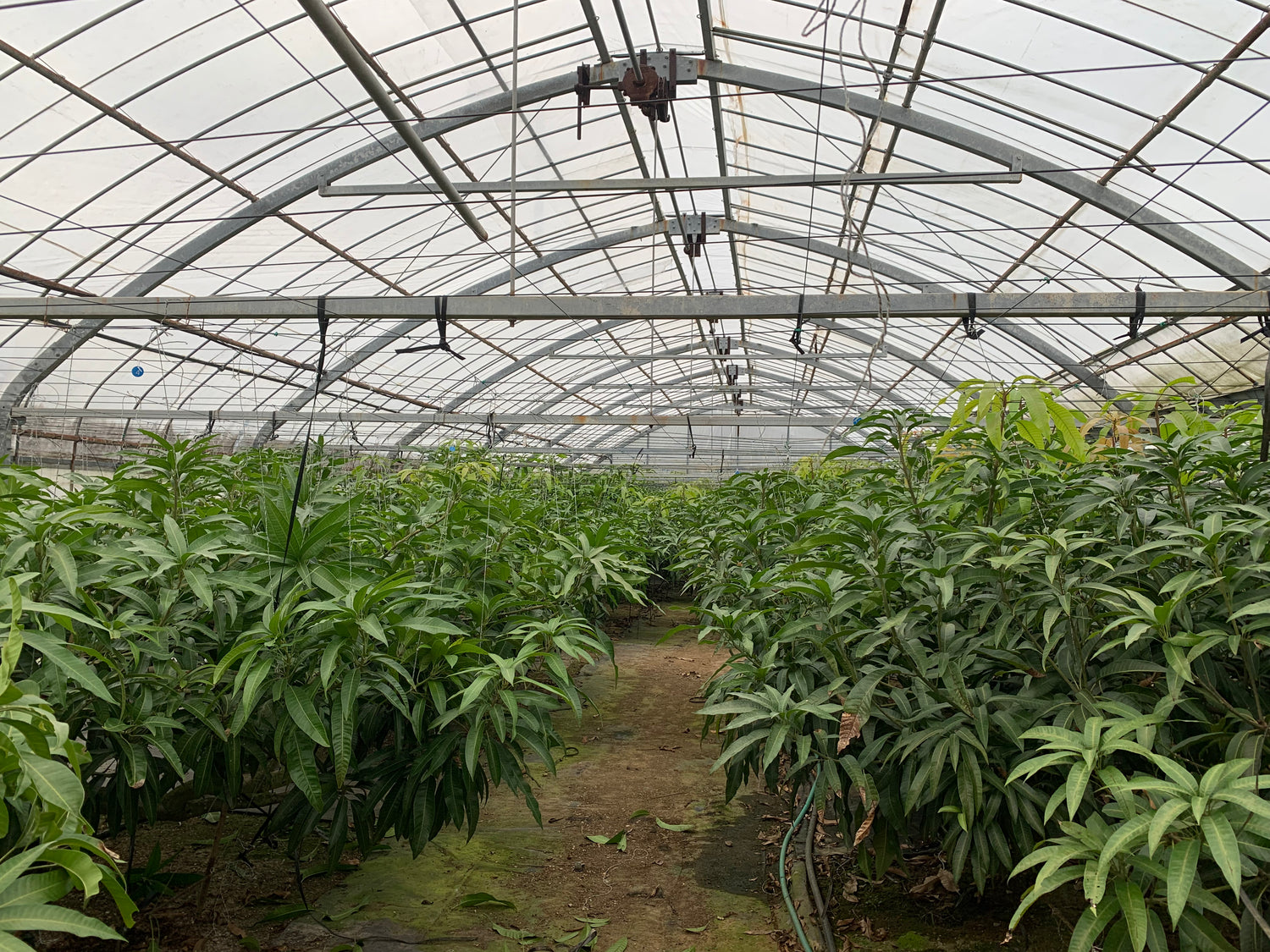
STEP 1
Start with the tree
The most important step is to focus on the tree itself, not the flowers and fruits. When you take care of your fruit tree by pruning and managing it properly, you can ensure that the branches and leaves get sunlight and nutrients evenly. This helps the tree blossom and bear fruit beautifully. In the first year, I didn't go overboard with the pruning, but there were a bunch of fruiting branches and leaves, and the tips of the leaves got messed up during planting. The main branches of the mango tree are "lured" to the ground, which keeps the tree from growing too tall.
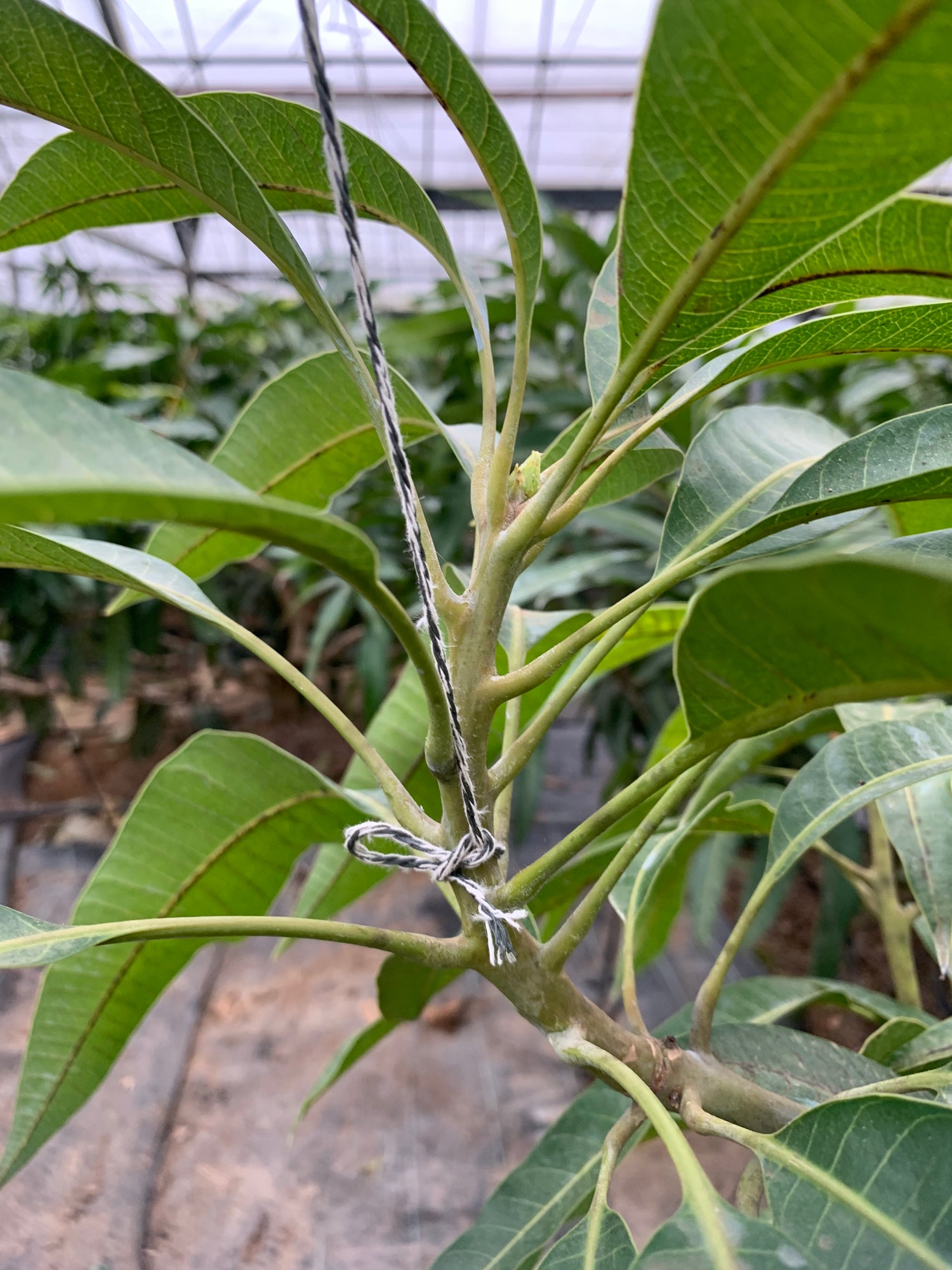
STEP 2
Do you see that little flower bud?
The plant is cleverly designed to find sunlight on its own, but we can also give it a little boost to make sure the fruit branch gets enough sun.
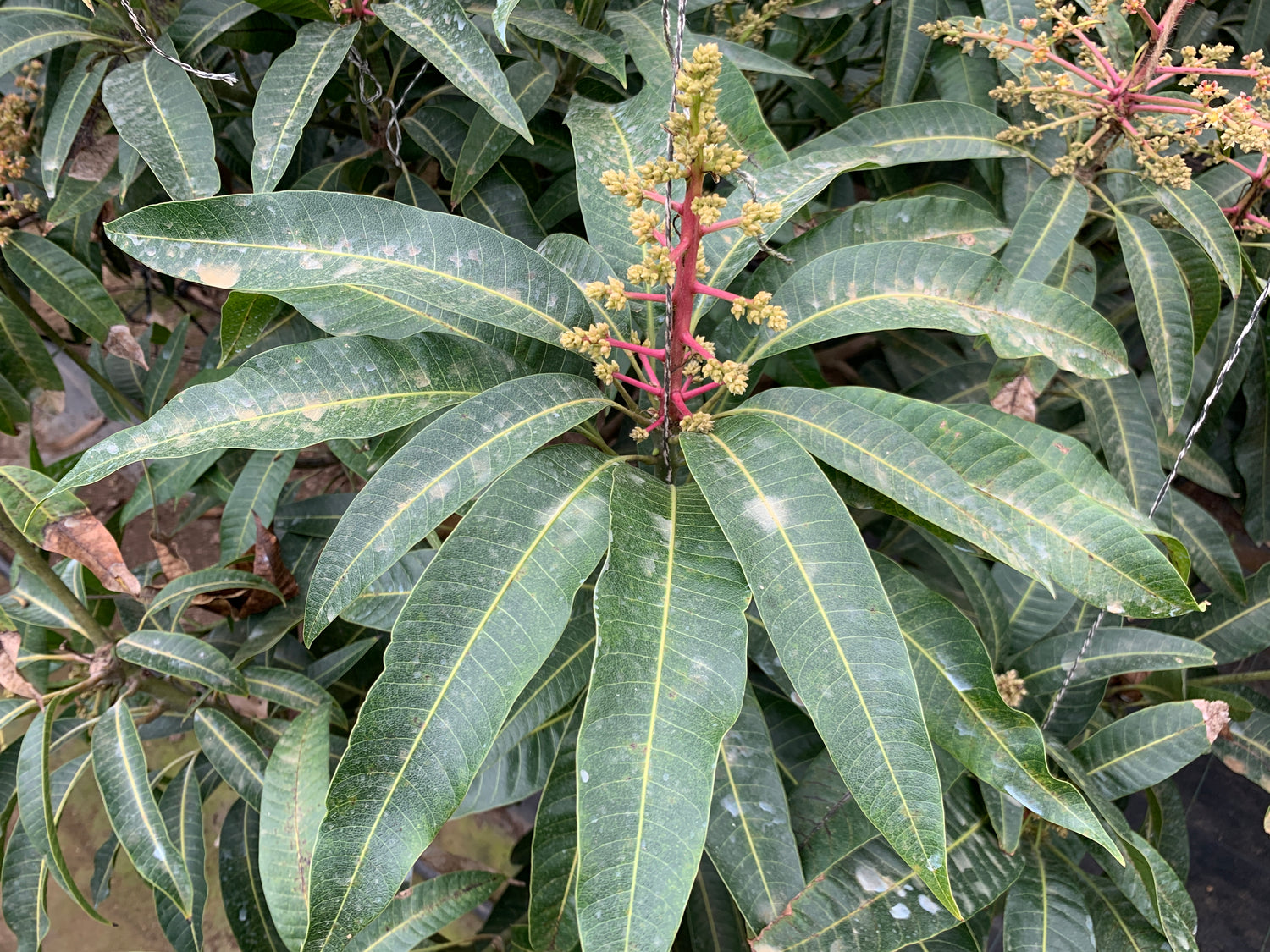
STEP 3
Determined thickness
When there's enough sunlight, the flower stems are lovingly painted with the beautiful Magenda red. Their powerful stems can grow to be over 15 centimeters tall. At this point, the thickness of the stems will determine whether it is "one fruit per branch" or "two fruits per branch."
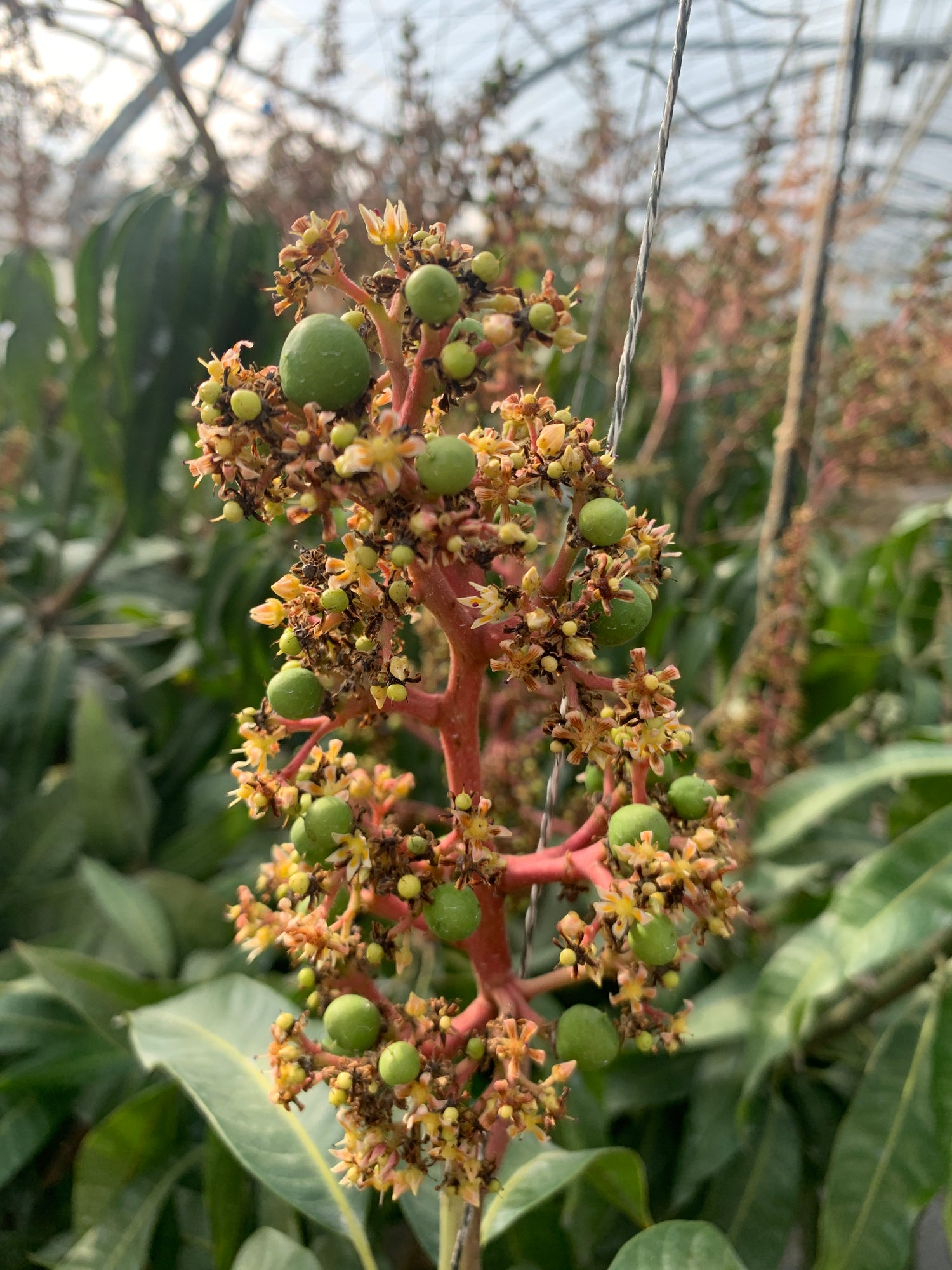
STEP 4
Insects are great teammates
If a pollination doesn't happen, the flowers might not produce fruit. Insects are such wonderful creatures! They're like the best teammates a farmer could have. We'll be sure to let you know how to recruit these tens of thousands of teammates.
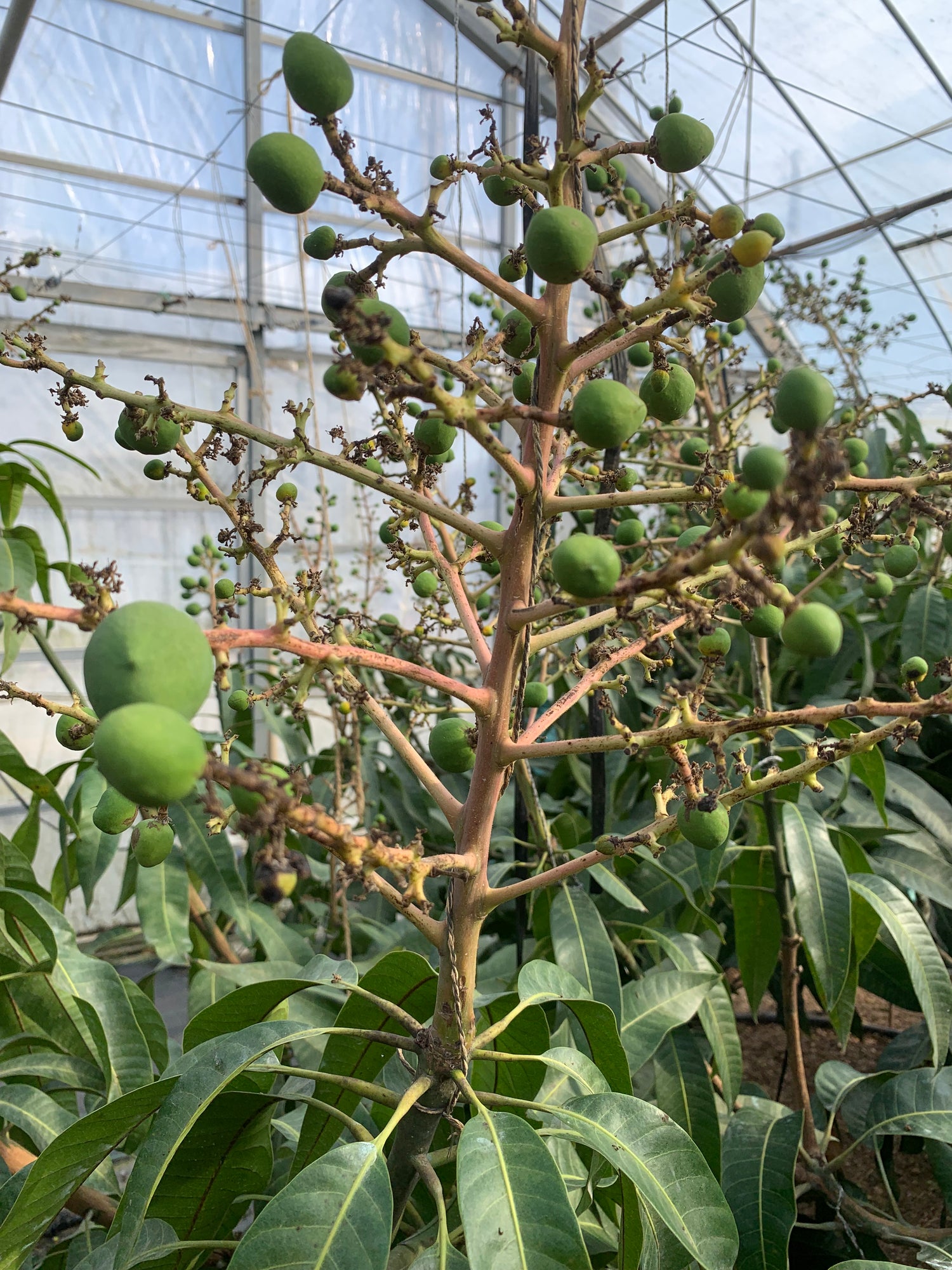
STEP 5
Picking Fruits
When you see fruit branches full of fruit, it makes you so happy! And when you're picking fruit, it's important to be gentle. I was so happy with the fruits that I started to pick them with a vengeance. I kept reminding myself, "One fruit per branch, one fruit per branch, one fruit per branch," but I just couldn't seem to get it right.
The green mango that I picked is just like the green mango in a small park store or stationery store! You can find the yellow mango at small park stores or stationery shops. It comes in big bottles that are sour and sweet with a strong chemical flavor. It's only 3 dollars a piece! You can eat it as much as you like!
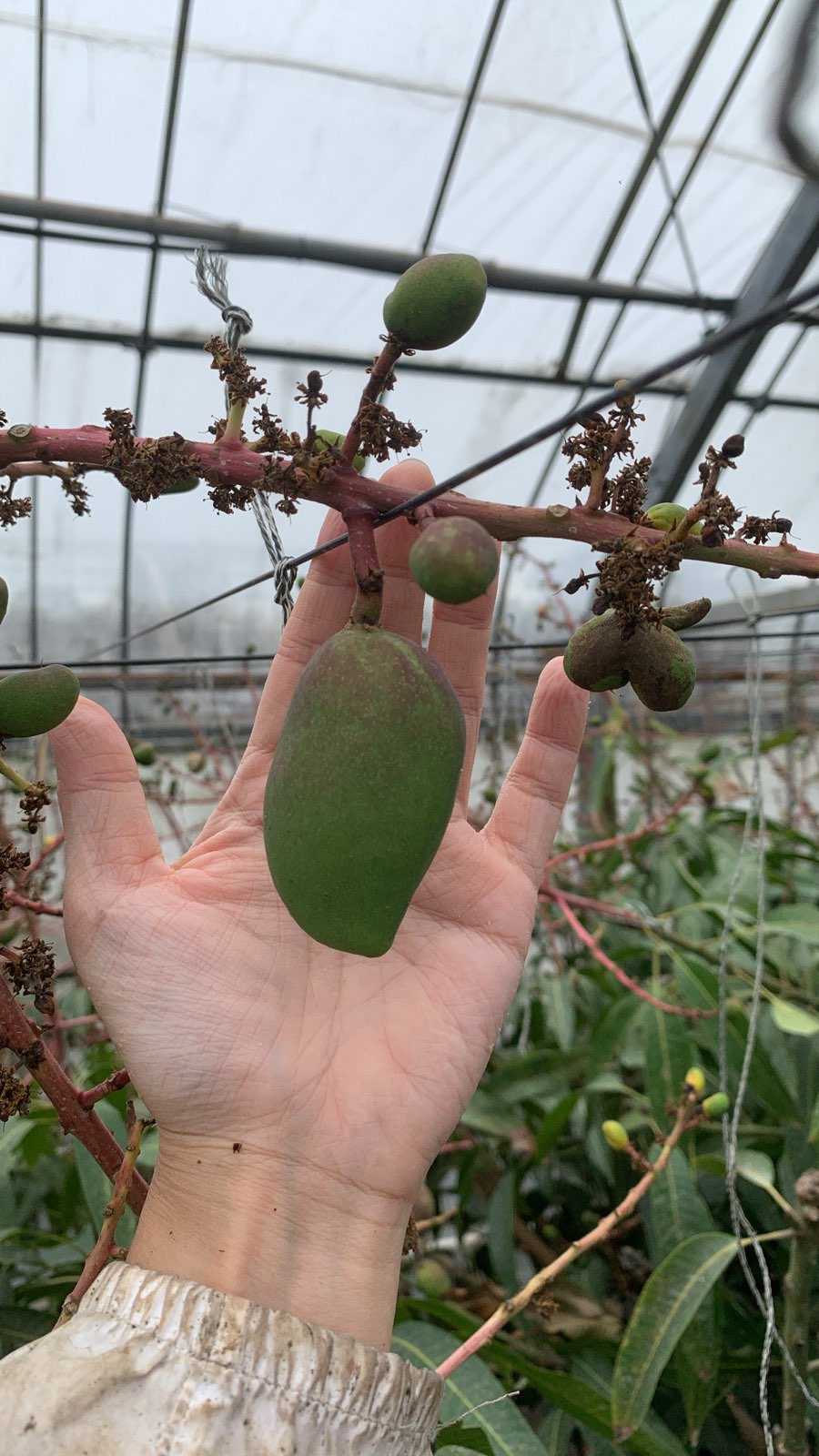
STEP 6
Potential Fruit
In the early stage, mangoes that can grow to the size of a finger are potential fruits. When it enters the fattening period, the mango will first stretch itself and then fatten itself to be full in 360 degrees.
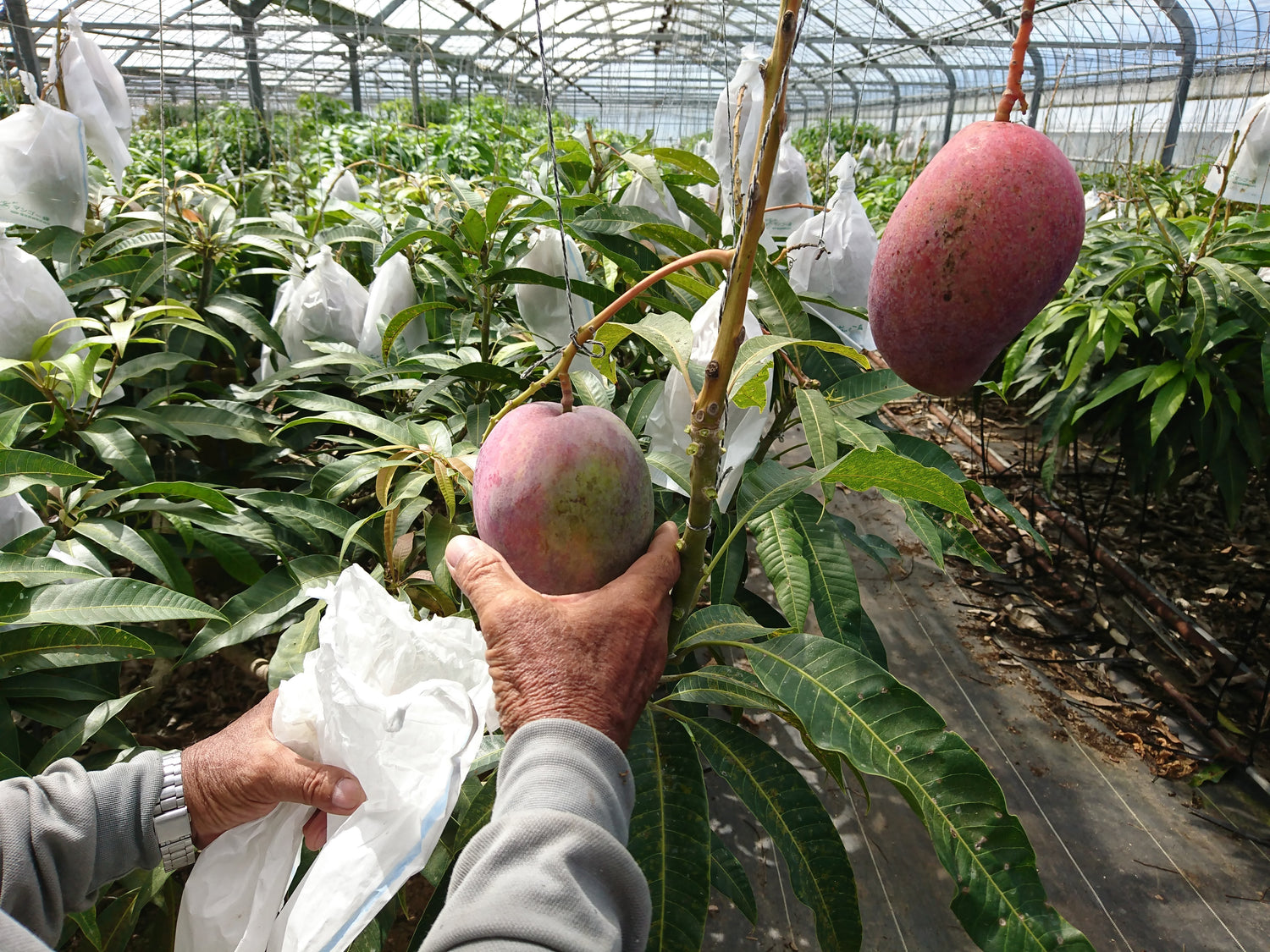
STEP 7
Mango also needs sun protection
Under the scorching hot weather of Okinawa, mangoes quietly turn dark purple and then orange-red. They can't be hung with sunscreen, so the only way to protect them is physically: put on a paper bag with iron threads and fasten it to the fruit branches to protect them from sunburns and to prevent them from accidentally falling from the sky.
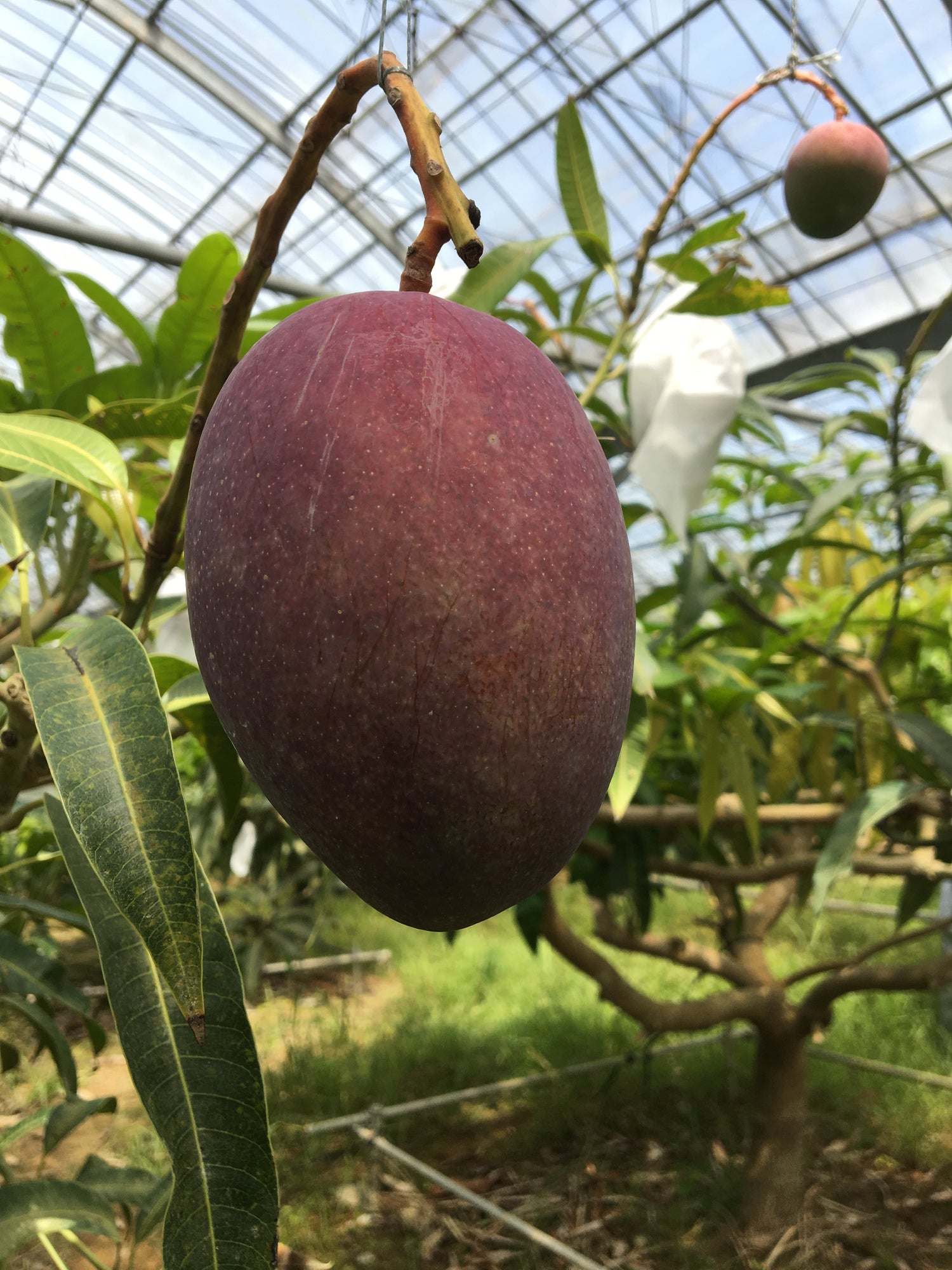
STEP 8
Eat Shiny!
Once the dull skin has been tinted with oil, it's time to freeze and cut into the mango that has spent the whole year coming to your mouth without any problems.
